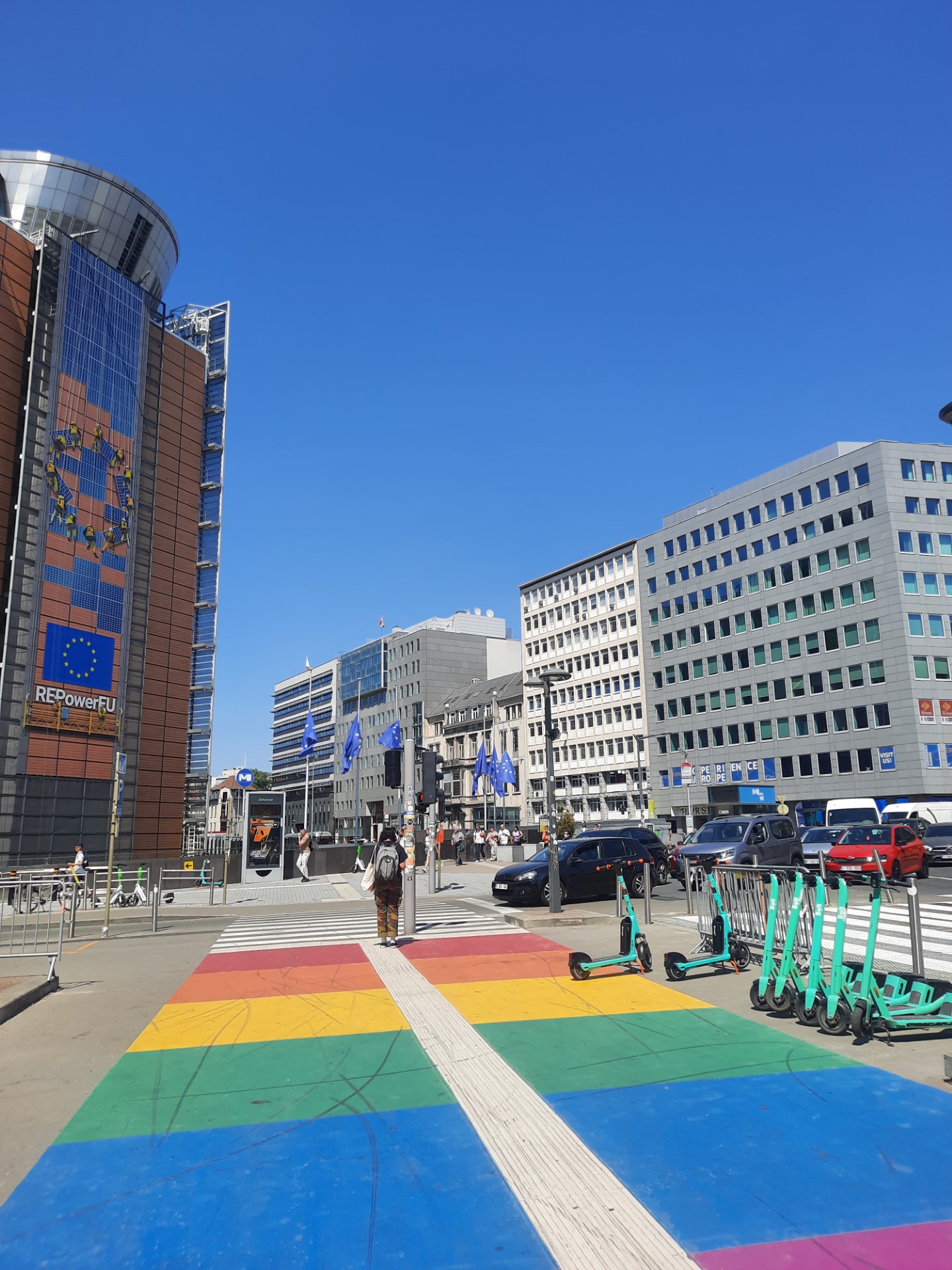The political heart of Brussels, the European Quarter, houses impressive buildings such as the European Commission, the European Parliament, and the House of European History. But in terms of liveability and sustainability, there is room for improvement. Currently, the large Rue de la Loi slices through the quarter, hindering its walkability and prioritising motorised traffic.
In May 2022, perspective.brussels, a regional agency, set about changing this through a series of participatory workshops. Together with locals and employees of the European Union, the organisation looked into ways of transforming the European Quarter into a more sustainable neighbourhood. A key component of this goal will be housing: Currently, only 3% of the European Quarter’s area is dedicated to housing. Considering the shift towards remote work and the many offices that have been empty since the pandemic, perspective.brussels thinks that the percentage of housing could be increased to up to 50%, including local amenities.
Already, local streets in the European Quarter are being turned into more vibrant places for residents and workers. Parklets, pocket parks, benches, and pedestrianised side streets make the area around the European Commission much more attractive. At the same time, a reduction in densification and street space dedicated to cars will create urban blocks that are climate resilient, for example, by providing cooler spaces and sponge city elements which, in the case of heavy rains, can absorb rainwater quickly and efficiently.
Another goal of perspective.brussels is to radically reduce the carbon footprint of the building stock by stimulating renovation and transformation in the European Quarter. So far, the focus has been more on demolition and reconstruction. However, in the spirit of the circular economy, the organisation proposes to reuse the existing buildings and turn them into housing and local amenities, thereby avoiding further CO2 emissions.
One more challenge is the isolation of the European Quarter, which is due to the nature of diplomacy work, but also to large streets such as Schumann Boulevard. Strengthening connection with neighbouring areas through an East-West green corridor, more liveable and inviting streets, attractive amenities, and natural landscape features could be the way to go.
The Brussels Regional Government supports these plans. Together with the organisation, it published a “Shared Vision” with nine principles, aiming to transform the EU Quarter into a vibrant and mixed neighbourhood in the next 10 to 20 years. More housing, more facilities, and greener public spaces will shape the area and avoid the “bubble effect” that has characterised the European Quarter since the first pre-EU institutions moved there in 1958 onwards. The homogenous neighbourhood will undergo urban upgrading with a similar density, lower building heights and more courtyards. Ground floors will be activated to create an interaction with public space. A diverse housing supply, office buildings with commercial and service functions on the ground floors, the temporary use of vacant buildings, reduced traffic, and greener streets are all parts of the plan.
It now remains to be seen whether the European Quarter can really turn into an accessible, attractive, and liveable neighbourhood that adapts to a post-COVID reality. The first steps, including pocket parks and investments in walkability, are already visible and promise change.

